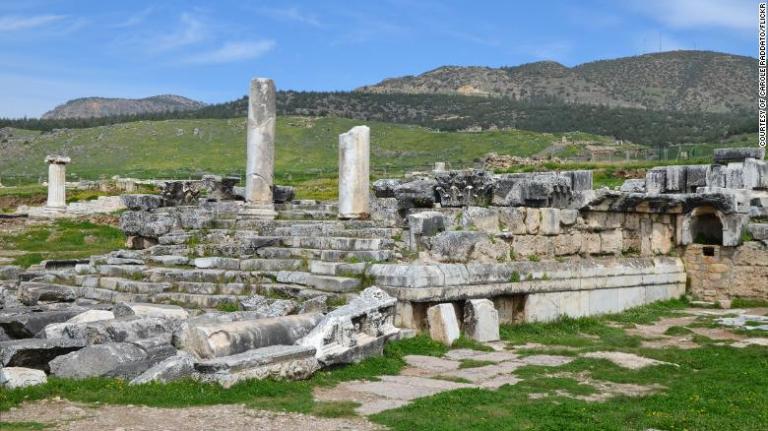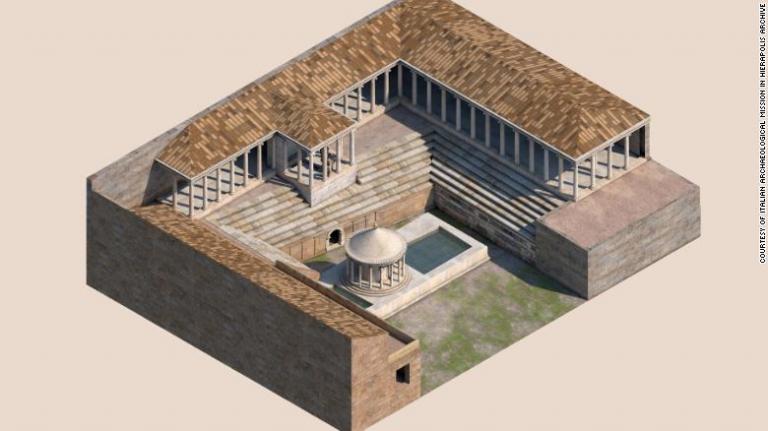[picture courtesy of CNN]
The Plutonium in Hierapolis is an important site for those interested in studying the nature of ancient Greco-Roman religion. I’ve posted on it before, and indeed that particular Plutonium (named of course after Pluto, the god of the underworld) features in my novel Papias and the Mysterious Menorah, which you might enjoy. The drawing above is an archaeologist’s reconstruction of what the Plutonium must have looked like in the first century A.D. when Christians (including Philip and his prophesying daughters) lived there, and Papias was a ‘shepherd’ of the flock, being a bishop in Laodicea and Hierapolis it would appear. The latest archaeological work at the site involved scientific testing of the atmosphere in the Plutonium itself. As it turns out, there is a very high concentration of C02 being emitted from a crack in the earth down in the lower regions of this Plutonium. The ancients believe there were various gates into the Underworld, this being one, but what made this site a tourist attraction of sorts, is that priests and others would demonstrate the power of Pluto by sending birds etc. into the underground chamber, and they would be found dead thereafter. This could be called the ancient equivalent of a hell fire sermon, meant to demonstrate to the living that there really was an afterlife to be feared. Here is all that is left of the Plutonium today….

[picture courtesy of CNN]
The site was rediscovered in 2013 by an Italian archaeologist, and exploration and testing of it has been going on since then. In the CNN article about the exploration and testing (which can be found here— https://www.cnn.com/2018/03/09/world/mystery-gates-to-hell-hierapolis/index.html), Hardy Pfanz, who is actually a vulcanogist (a man who studies volcanos) did the testing and has some theories as why humans might survive a journey into this CO2 chamber, but not animals. Here is a quote from the article—-“Using a portable gas analyzer, Hardy Pfanz and his team of volcanologists found CO2 at levels ranging from 4-53% at the mouth of the cave, and as high as 91% inside — more than enough to kill living organisms.”
Hardy notes: “Problems for mammals (including humans) start way below 5% CO2,” Pfanz told CNN. “A longer stay at 7% and more leads to sweating, dizziness, tachycardia (elevated heart rate) etc. A further increase would lead to asphyxiation due to the lack of oxygen and due to acidification of the blood and the body or brain cells.”
So it’s no wonder the animals that entered the cave came to a swift end. During the research period alone, Pfanz says they found several dead birds, mice and more than 70 dead beetles.
Both Strabo and Pliny the Elder visited the site in antiquity and commented on the vapors emerging from the place. Hardy noticed that the concentration of CO2 was especially high at dusk and at dawn. He theorizes it affected animals more quickly because they were lower to the ground, and CO2 is a heavy gas. Lamps found down in the grotto show that the ancients had rituals down in the cave, perhaps at night. In any case, this study shows that there were natural causes for the effects of the chamber on animals and humans, and alas, it was not the god Pluto luring them to their deaths, it was the gas carbon dioxide.













